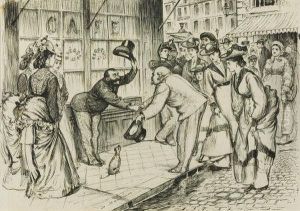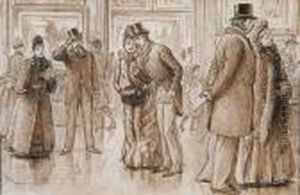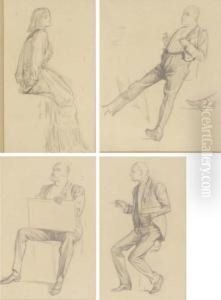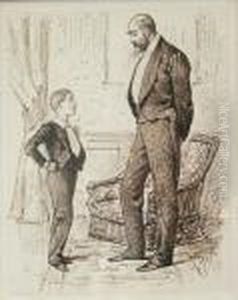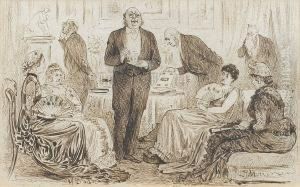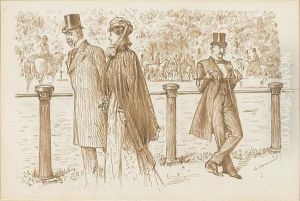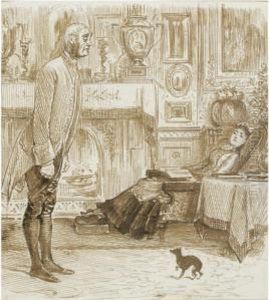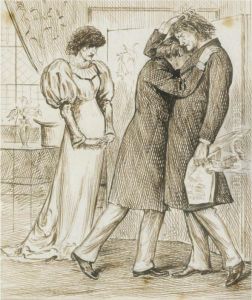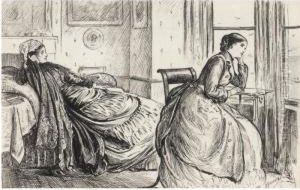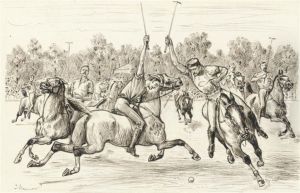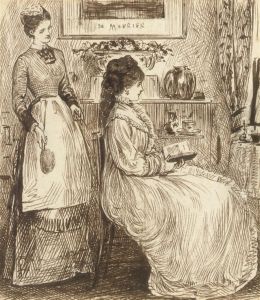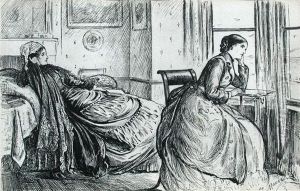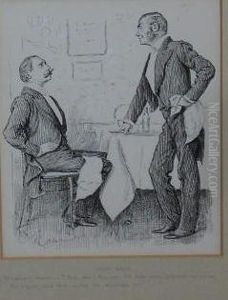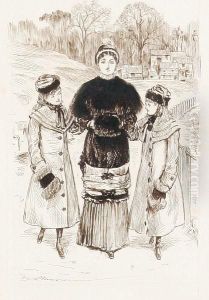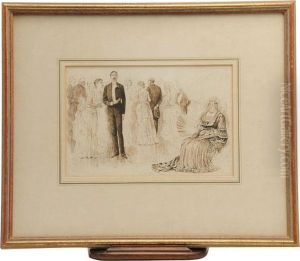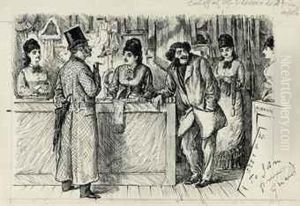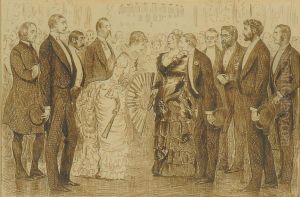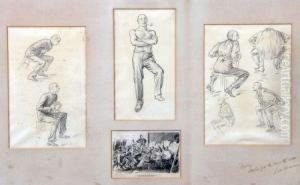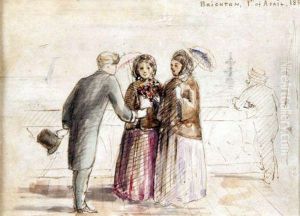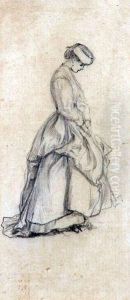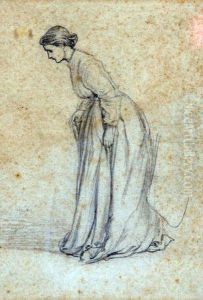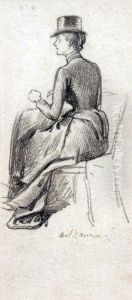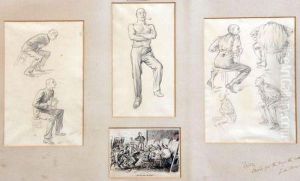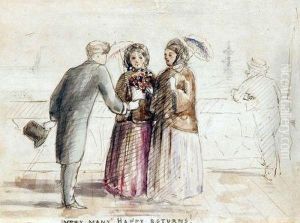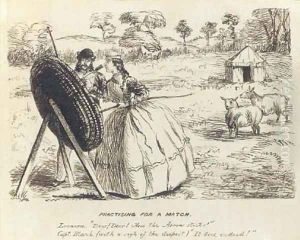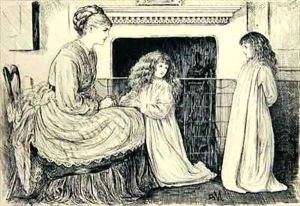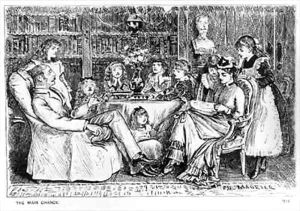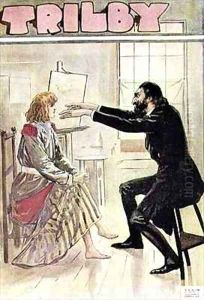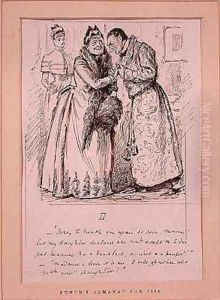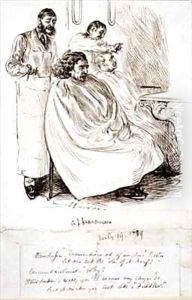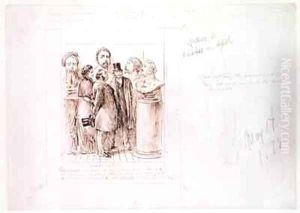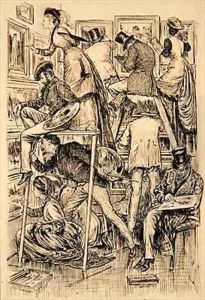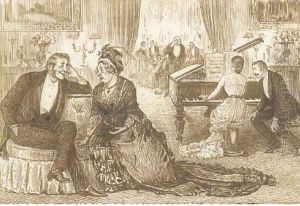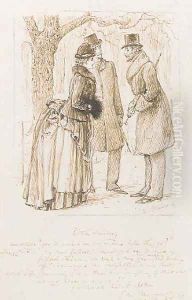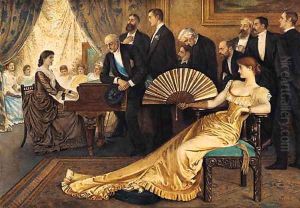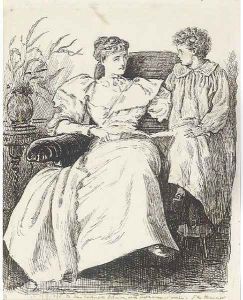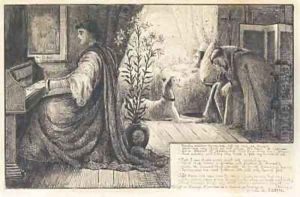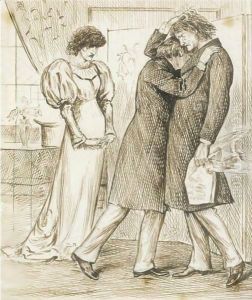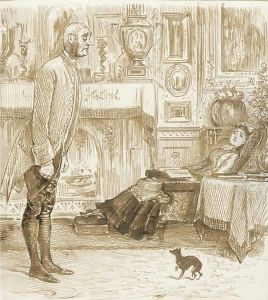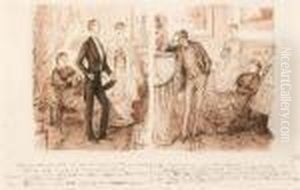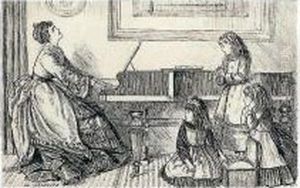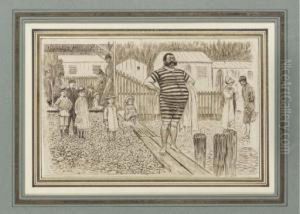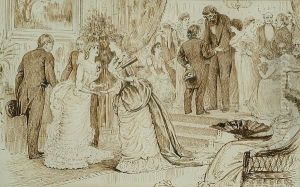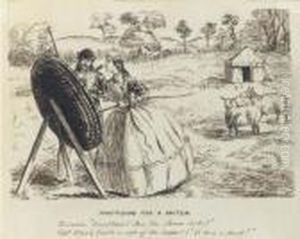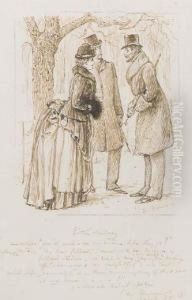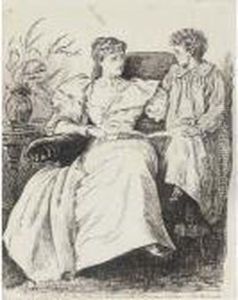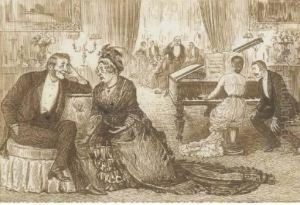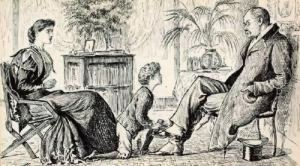George L. Du Maurier Paintings
George Louis Palmella Busson du Maurier was a French-British cartoonist and author, known for his work as a cartoonist for Punch, a British humor magazine, and for his novel 'Trilby'. Du Maurier was born in Paris to a French father and an English mother and was educated in France. However, his aspirations to become an artist were disrupted by an eye condition, which prompted him to move to Belgium to study at the Antwerp Academy. After the death of his father, du Maurier relocated to London, where he began to establish himself as an illustrator.
Du Maurier's career as an illustrator gained momentum in the 1860s when he started working for Punch. His illustrations often depicted the social scenes and character types of the Victorian era with a gentle satirical wit, and they became popular among the magazine's readers. In addition to his work for Punch, du Maurier also illustrated for other periodicals and books, contributing to the visual culture of the time.
Aside from his illustration work, du Maurier is best remembered for his novel 'Trilby', published in 1894. The novel was a sensation in its time, partly due to its depiction of the character Svengali, a sinister musician who exerts a malevolent influence over the heroine, Trilby O'Ferrall. The term 'Svengali' has since entered the English language to describe a person who manipulates or controls another for nefarious purposes.
Du Maurier's impact on popular culture extended beyond his literary work. His caricatures and drawings helped define the visual style of the late Victorian period, and his storytelling in 'Trilby' influenced the genres of fantasy and horror.
Du Maurier was married to Emma Wightwick, and the couple had five children. Among them was Gerald du Maurier, who became a famous actor and manager, and Sylvia Llewelyn Davies, the mother of the boys who inspired J.M. Barrie's 'Peter Pan'. George du Maurier suffered from deteriorating eyesight throughout his life, and it eventually led to his death in 1896. He left behind a legacy as a significant figure in the world of Victorian art and literature.
